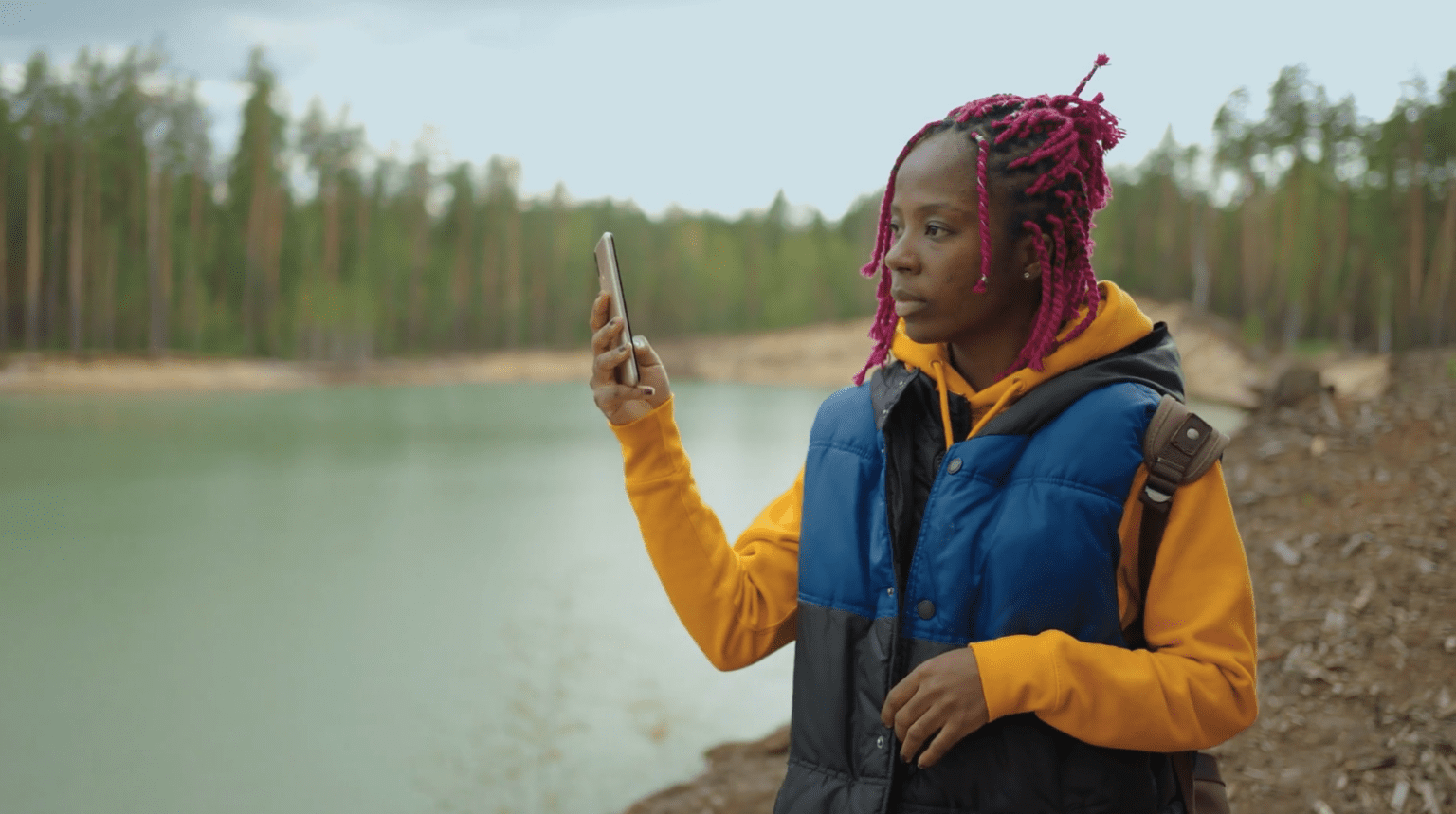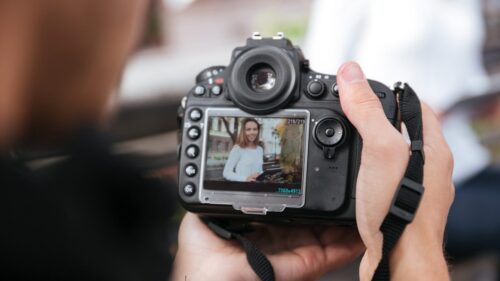What is the best camera ever? Arri Alexa? RED Ranger? Panavision Millennium DXL2? While all of these are great options, we have one that you probably haven’t considered.
Your smartphone.
It’s easy to drool over the latest tech and fancy specs, but you can create captivating videos with almost any camera — even on smartphones!! It’s typical to pass up on smartphones when talking about making cinematic movies, but that device in your pocket is more powerful than you think, just with a few filmmaking apps and tools.
Nowadays, almost every smartphone can shoot in full HD, and even 4K. So whether you have an iPhone or Android or something in between, you already have the means to create professional looking films.
OK, so maybe you can’t just show up to a professional shoot, whip out your iPhone, and say “Let’s do this!” But you can write a script, grab some friends and make a short film worthy of your portfolio, reel, or YouTube channel —all with just your phone. To help you along, we’ve put together a few tricks, filmmaking apps and gear recommendations that will help you get the most out of mobile footage and turn your phone into a powerful filmmaking tool.
You can also browse our library of stock footage to take your mobile movie to the next level without breaking the bank.
How to Turn Your Phone Into a Powerful Filmmaking Tool
Filmmaking Apps
Smartphone’s camera settings have definitely changed over time and there is a lot you can do currently within your device that you might not even know about.
So how do you unlock the true potential of your phone? The answer is through mobile apps —yes, mobile apps can do a lot more than just fling frustrated birds at green pigs.
FilMic Pro is an app available for both Apple iOS and Android packed with cutting-edge features to help you make awesome 4K video content. This app gives you full manual controls — including changing the exposure, ISO, shutter speed and zoom. You also have the ability to adjust video settings (exposure, contrast, saturation, tint, etc.) after film capture. FiLMic Pro also supports 10-bit SDR on iPhone 12 series and select Android devices. This app has been named iOS Video Camera App of the Year multiple times and has been used on high profile video projects. Priced at $14.99, FilMic pro may just be the best valued filmmaking app to enhance your phone’s camera.
Celtx Script is a free app for iOS and Android to help with all of your scriptwriting needs! Celtx Script allows you to write properly formatted scripts from your mobile device or tablet. Some key features include automatic formatting to screenplay, stage play, audioplay and Comic Book format.
Movie Slate 8 is an all-in-one digital slate, clapper board, shot log, and notepad available as an iOS app for $29.99. This app can help you get organized for film projects by logging footage and taking notes as you shoot. It also records production info, logs notes, syncs timecodes and generates daily shot reports. Movie Slate 8 can also be connected to software like Final Cut Pro and Adobe Premiere.
Stabilize Your Phone with Filmmaking Tools
The downside of using phones as cameras is that they’re extremely small and light. Although good for run-and-gun shooting, the lack of weight typically leads to more shake. Fortunately, this is an easy fix. There are many smartphone attachments that let you rig your phone to a tripod. These are simple and don’t have to be expensive, yet they are very effective. The Torjim 60” Phone Tripod Stand is a great option that is portable and the height can be adjusted.
If you are looking to add a little extra light to your shots, there are some really cool tripods with built in “selfie” lights for that extra glow. Check out the Ubeesize 10” selfie Ring Light that comes complete with a 50” extendable tripod stand. This way, your camera won’t be shaky and you will be glowing!
Get Some Glass
You can really enhance the visuals of phone footage by getting specialized lenses for mobile devices. Just like lenses for DSLRs, mobile lenses can be wide, telephoto, and even anamorphic. Although these aren’t necessary considering many phones have a decent zoom range, these lenses can help change perspective and also get you that shallow depth of field. These Apexel lenses are a great bang for your buck! They can clip on to almost every phone, and they look good too!
Mic Up
Remember — what you hear is just as important as what you see. Fortunately, phones have pretty good internal microphones. If you think about it, their main purpose is to transmit sound. However, there is always something that can boost the phone’s performance. This just so happens to take the form of external microphones built specifically for smartphones. There are tons of options that will record crisp and clean audio directly to your phone — the EACHSHOT Smartphone Microphone and the Saramonic Mini Plug Microphone are affordable and a great place to start. You can also get the ttstar lav mic to record audio closer to your subject.
It just goes to show—it isn’t the camera that matters, it’s how you use it. All of these amazing accessories aren’t even necessary to make something that sticks with your audience. Composition, lighting and overall story work independently from the camera. These factors are what separate a good filmmaker from a bad one — not the type of camera they use. An audience would rather watch an amazing story filmed on an iPhone than a horrible one filmed on an Arri Alexa. So if you learn to work with what you have, then you’ll be on your way to becoming a better filmmaker in no time.
If you want an additional tool to help you edit your beautiful footage shot from your smartphone, check out Maker, a simple and fast editor where you can make professional videos with no experience required.
Editor’s Note: This post was originally published on November 17, 2017 but has been updated to reflect current information.



